When it comes to barbecuing, charcoal is an essential ingredient. Whether grilling in the backyard or at a campsite, charcoal can help you prepare your food perfectly. But one question often asked is, “How long does charcoal last?” This article will explore that question and provide tips on ensuring your charcoal lasts as long as possible.
We’ll look at factors like storage, usage, and environmental conditions that can affect the lifespan of charcoal. We’ll also provide advice on how to tell when the quality of your charcoal has been compromised and needs to be replaced. Finally, we’ll offer some suggestions on alternative cooking methods with charcoal. So if you want to make sure you get the most out of your charcoal, read on!
Types of Charcoal
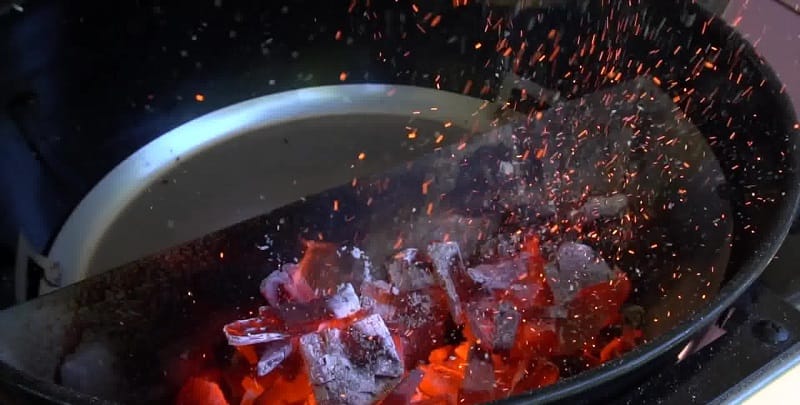
Whether you’re a beginner or an experienced grill master, you know that charcoal is one of the essential ingredients to make your grilling experience truly special. But did you know there are different charcoal types to choose from?
We’ll walk you through the different types of charcoal for grills so that you can make the best decision for your next cookout.
Lump Charcoal
The most popular type of charcoal is lump charcoal. Made from burning hardwood without oxygen, this charcoal is usually made from oak, hickory, or mesquite. Lump charcoal is ideal for grilling because it lights quickly and burns hotter and more evenly than other types.
Briquettes
Briquettes are another popular type of charcoal for grills. Briquettes are made from burning wood with added ingredients like sawdust, starch, and petroleum binders, which are uniform in shape, size, and burn time. Briquettes typically burn longer than lump charcoal and are ideal for larger grills that need to cook for longer periods.
Binchotan Charcoal
If you’re looking for an even hotter and longer-lasting coal, then you might want to consider binchotan charcoal. This charcoal is made from burning oak wood at very high temperatures and is known for its intense heat, slow burn, and virtually no smoke.
Charcoal Briquettes with Wood Chips
You can try charcoal briquettes with wood chips for an even smokier flavor. This charcoal type comprises wood chips, briquettes, and other blended ingredients. The wood chips will add a nice smoky flavor to your grilling and will also help the charcoal burn longer.
Coconut Charcoal
For something a little different, you can try coconut charcoal. This type of charcoal is made from burning coconut shells and is known for its long burn time, intense heat, and ability to produce little to no smoke. Coconut charcoal is also a great eco-friendly option for grilling.
How Long Does Charcoal Last?
Charcoal is a popular choice for grilling, as it provides consistent heat while cooking. The good news is that charcoal has some predictability unless there are unusual weather conditions like cold, damp, or windy.
Depending on the type of grill and method used, charcoal can last anywhere from 1-6 hours. Generally speaking, a standard grill will last between 2-3 hours, while a smoker can last up to 6 hours.
Charcoal briquettes can technically last indefinitely as long as they are stored correctly in a cool and dry place. The heat from the charcoal will typically remain for about 15 minutes after the coals burn out. With proper care and storage, activated charcoal can also have an indefinite shelf life.
How Long Does Charcoal Last In Your System?
Cooking with charcoal grills can be a fun, easy way to enjoy outdoor meals. However, understanding how long the charcoal will last in your system is essential for a successful grilling experience.
Generally, charcoal tablets need one to three days to cleanse your system. When it comes to cooking on the grill, it is usually safe to cook food on a charcoal grill for up to two hours after the coals have been lit.
The amount of time that charcoal will last varies depending on the temperature at start time, size/type, and the grill used. For example, on an average grill, charcoal typically lasts around two to three hours, while on a smoker, it lasts up to six hours. If you need more time than that, you can suffocate the fire for two full days by closing the lid and shutting the vents until the ash has cooled for at least 48 hours.
How Long Does Charcoal Last In Smoker?
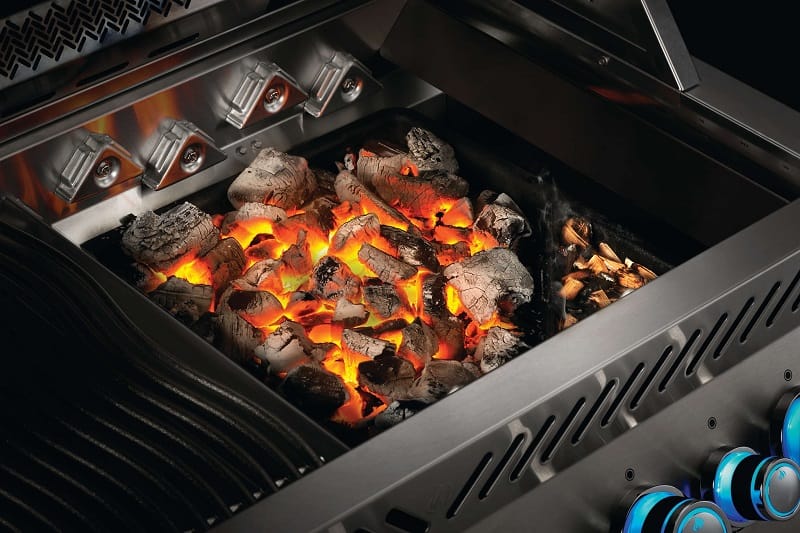
Charcoal is an excellent choice for smoking, as it can be used to maintain low and steady temperatures for a long period of time. Charcoal briquettes are usually formulated to burn for about 1 hour at a steady temperature, generally hotter than smoking. However, this time can vary depending on the type of charcoal and the conditions, such as cold, damp, or windy.
Buying more charcoal than needed is recommended to ensure you don’t run out while smoking. Stored charcoal can last indefinitely if stored properly. You can get up to five hours of burning time with charcoal with proper use, but it is important to let your food cook long and slow. A rack of ribs might take six to seven hours of cooking over charcoal, so make sure you factor this in when preparing your meal.
Does The Type Of Charcoal Affect How Long It Lasts?
When it comes to charcoal, there are many types to choose from, each with its unique characteristics. But does the kind of charcoal affect how long it lasts? The answer is yes! Different types of charcoal can last for different lengths of time, depending on the type.
Briquettes
Briquettes are generally composed of wood and coal, with a small amount of borax and starch as binding agents. The binding agent helps to keep the briquette together, allowing it to burn slowly and evenly. Briquettes can burn up to three times longer than other types of charcoal.
Lump Charcoal
Lump charcoal burns hotter and faster than briquettes, but it also lasts for a shorter time. It is best suited for short cooking sessions, such as grilling hot dogs or burgers.
Charcoal Briquettes with Added Materials
Charcoal briquettes with added materials are another type of charcoal. These briquettes are made from wood, coal, and other materials that have been compressed with a binding agent. These briquettes can last up to four times longer than lump charcoal and burn for a longer period. Charcoal briquettes with added materials are best suited for long-term cooking and grilling.
Wood Charcoal
This charcoal type can burn up to five times longer than lump charcoal and reach higher temperatures. Wood charcoal is ideal for smoking meats, baking bread, and creating coal-fired pizzas.
Does The Size Of Charcoal Pieces Influence Its Longevity?
This is a question that many people have asked when buying charcoal for their grills or fire pits. The answer is yes, in some cases.
The size of the pieces makes a difference when it comes to charcoal. Smaller pieces will burn faster, so if you’re looking for a longer-lasting fire, you’ll want to choose bigger pieces. The larger the pieces, the longer the fire will last. Larger pieces also create a more even burn, which helps make the charcoal last longer.
The size of the charcoal pieces isn’t the only factor that affects how long the charcoal will last. The type of charcoal you choose can also make a difference. For example, lump charcoal burns much hotter and faster than briquettes, so it won’t last as long.
The bigger the pieces, the longer the fire will last. However, other factors influence the longevity of charcoal.
- The quality of the charcoal can make a difference in how long it burns. Charcoal with higher levels of natural minerals, such as potassium or magnesium, will last longer than charcoal without these minerals. Additionally, charcoal produced using sustainable methods, such as recycled materials, will typically last longer than charcoal produced using non-sustainable methods.
- The humidity of the environment can also affect the longevity of the charcoal. If the air is too dry, the charcoal will burn faster, while if the air is humid, the charcoal will burn more slowly.
- Finally, how the charcoal is stored can also influence its longevity. Charcoal should be stored in a cool, dry, and dark place, away from direct sunlight and moisture. If the charcoal is exposed to extreme temperatures, it can lose its ability to burn as effectively.
Can Leftover Charcoal Be Used Again After A Few Days?
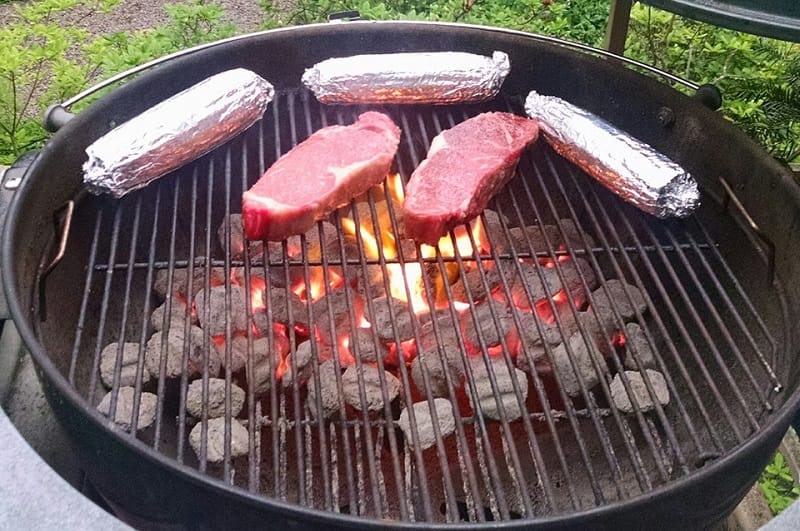
It is possible to reuse leftover charcoal after a few days. Charcoal retains its heat-generating properties even after it has been burned so that it can reignite a second time.
To increase your chances of success, don’t extinguish the coals with water; instead, spray them down with a hose or cover them with an airtight lid. You can also separate the charcoal from the ash, which helps prevent fogginess.
Finally, if you don’t want to reuse your charcoal for cooking, consider using it for other purposes, such as making DIY charcoal soap or as a natural fertilizer. Reusing charcoal is not only economical but also environmentally friendly, so make sure to give it a try!
Are There Any Safety Hazards Associated With Using Old, Expired Charcoals?
Using old, expired charcoals can be a safety hazard, as they can produce noxious fumes and put you at risk of carbon monoxide poisoning.
Charcoal that is not properly stored can also become brittle and could break apart when lit, potentially leading to injuries. Charcoals can also become more combustible as they age, making them more prone to explosions or fire.
When using old, expired charcoals, it is important to ensure they are stored safely, away from any heat sources, and in an area with adequate ventilation. Wearing protective gear, such as gloves and a face mask, is also important when handling the charcoals.
Lastly, it is best to avoid using old, expired charcoals altogether, if possible, to help minimize their safety risks.
Does Charcoal Go Bad If It Gets Wet
In short, yes: charcoal can go bad if it gets wet. When exposed to moisture, the wood particles that makeup charcoal can swell, causing it to become less efficient as a fuel source. This means the charcoal may not light as easily and burn less intensely, leading to a less-than-desirable grilling experience.
But don’t worry: charcoal can often be salvaged after getting wet. Before using it, make sure to dry it out completely. This can be done by spreading the charcoal on a newspaper or other absorbent material and allowing it to air-dry. Place the charcoal in a warm, sunny location, accelerating the drying process.
If the charcoal has been stored in a damp environment for an extended period of time, however, it may be best to discard it and buy a new bag. Excessive moisture can cause the charcoal to become moldy, leading to health risks if the mold is ingested while cooking.
It’s also important to remember that charcoal should always be stored in a dry, well-ventilated area. If charcoal is kept in an airtight container, it can become soggy and difficult to light. To ensure your charcoal stays dry, store it in a breathable bag that’s not made of plastic.
Read more:
Can Charcoal Get Moldy
The short answer to the question, “Can charcoal get moldy?” is yes. Charcoal is a porous material, so it is susceptible to mold and mildew, just like other porous materials.
Mold and mildew can grow in charcoal because they love dark, damp, and warm environments. Charcoal is an excellent breeding ground for these organisms because it is made of carbonized plant material, is porous, and retains water. When it gets wet, it creates the perfect environment for mold and mildew to thrive.
Mold and mildew can be serious health hazards. They can cause respiratory problems, allergies, and asthma. If mold or mildew is present in your charcoal, it should be disposed of immediately.
Storing mold in your charcoal is important to prevent mold from growing in a dry place. Please keep it away from humid areas such as bathrooms and basements. Also, store it in an airtight container or bag to keep the moisture out.
If you think that your charcoal has mold or mildew growing on it, the safest thing to do is to discard it. You don’t want to risk breathing in the spores and potentially making yourself sick. It’s better to be safe than sorry.
If you’re looking for charcoal that won’t get moldy, you should opt for one made from hardwood. Hardwood charcoal will not absorb water and is less likely to get moldy.
In conclusion, charcoal can get moldy if it becomes damp or is stored in a humid environment. Store it in a dry place and an airtight container to prevent this. If you think your charcoal has mold on it, discard it immediately.
Why Is Wet Charcoal Dangerous
We’ve all heard the age-old saying, “Don’t play with fire,” but the warning should also extend to wet charcoal. Wet charcoal can be as dangerous as playing with fire and cause serious harm if handled improperly.
Let’s explore why wet charcoal is so dangerous and how to avoid potential hazards.
Why is Wet Charcoal Dangerous?
- When charcoal is wet, it can easily become combustible. This means that even the slightest spark can cause it to ignite and cause a fire. And because wet charcoal is often kept in enclosed spaces, such as in a backyard grill, the risk of a fire becoming out of control is greater.
- In addition, wet charcoal can produce fumes that are hazardous to your health. When burned, charcoal produces carbon monoxide and other toxic gases, which can cause respiratory issues if inhaled.
- Finally, wet charcoal can contain bacteria and mold, which can harm your health. This is especially true if you’re cooking food on wet charcoal.
How to Safely Handle Wet Charcoal
To avoid the potential dangers of wet charcoal, it’s important to handle it safely. Here are a few tips:
- Keep charcoal in a dry location, away from heat sources.
- Don’t store charcoal near combustible materials like gasoline or wood.
- Before lighting charcoal, make sure it’s completely dry.
- Use a metal container to soak the charcoal in water.
- Always keep a fire extinguisher nearby when using wet charcoal.
- Never leave wet charcoal unattended.
- Dispose of wet charcoal properly after use.
Flammable Additives in Charcoal
Did you know that charcoal can contain flammable additives? These additives can make charcoal more flammable, efficient, and easier to ignite.
Charcoal is produced by burning wood at high temperatures without oxygen. This process produces charcoal briquettes, a popular fuel source for grilling and barbecuing. To make them more efficient, some manufacturers add flammable additives to them.
These additives can be categorized into two main groups: petroleum-based and plant-based. Petroleum-based additives include lighter fluid, kerosene, and other oil-based products. These additives are usually added to help the charcoal ignite quickly and easily.
Plant-based additives are typically derived from plant materials such as vegetable oils, waxes, and gums. These additives are designed to help the charcoal burn more efficiently while also helping to reduce smoke and ash.
It is important to note that the addition of these additives can increase the risk of a fire. Many of these additives are highly flammable and can cause a fire to start and spread quickly. Therefore, it is important to be aware of the potential dangers associated with their use.
When using charcoal with flammable additives, it is important to take some basic safety precautions. For starters, avoid using charcoal indoors or near combustible materials. Additionally, keep a fire extinguisher handy and never leave the area unattended when the charcoal is in use.
What Is The Best Way To Light Charcoal For Grilling?
When it comes to lighting charcoal for grilling, there are several methods to choose from. However, according to factual data, using a charcoal chimney or chimney starter is unequivocally the best way to go. This tool allows for even heating and consistent cooking temperatures.
To use a chimney starter, arrange the charcoal into a neat pile, place the starter over the pile, and light the newspaper or fire starter at the bottom. Another alternative is to layer the charcoal in a pyramid shape and ignite it with oil and newspaper.
While firefighters and starters are also options, they are made from paraffin wax and compressed cardboard, which may affect the taste of the food.
How Much Charcoal Should I Use When Grilling?
It can be difficult to know exactly how much charcoal to use for each situation when grilling. However, grilling can become much easier with some helpful tips and guidelines.
For direct-heat grilling, thin pieces of meat will need around 25-30 briquettes, while larger pieces will require about 35. The general rule of thumb is that charcoal is needed for every kilogram of meat. Beginners may need some guidance in determining the appropriate amount of charcoal to use, but with practice, it will become second nature.
For shorter cooking times, such as searing meat or cooking quickly, three-quarters to a full chimney of briquettes is suitable. On the other hand, for longer smoking times, only around one-third to a half of a chimney’s worth is necessary.
Storage Conditions for Charcoal
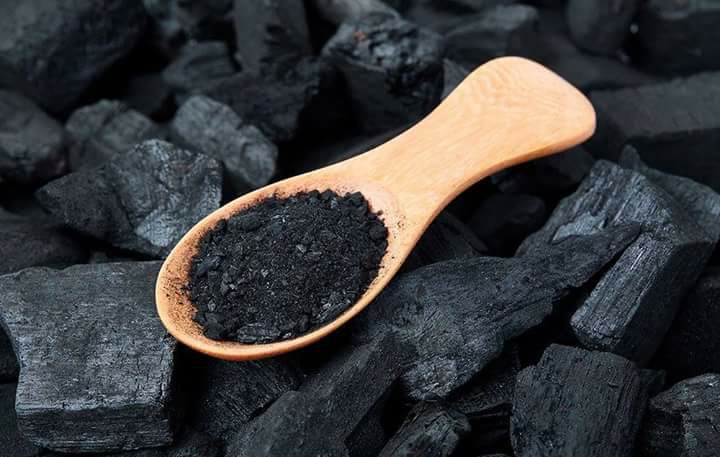
When storing charcoal, the conditions are crucial for maintaining its quality.
Charcoal should always be kept in a cool and dry place, away from moisture and humidity. Moisture in the air can lead to mold growth, ruining the charcoal. Therefore, storing unused charcoal in a plastic container with a tight-fitting lid or a storage container made explicitly for charcoal is best.
If you have a basement, it’s an excellent place to store the charcoal, as long as it’s dry. However, if you want to keep the charcoal outside, protect it from the elements.
Following these simple steps, you can keep your charcoal in excellent condition indefinitely.
Are There Any Tips Or Tricks To Make Charcoal Last Longer?
There are several tips and tricks to make charcoal last longer on the grill.
- Opening the lid on the grill can make the charcoal burn faster, so it’s best to keep it closed.
- Interspersing unsoaked wood chips or chunks among the unlit charcoal can also help slow the burning process.
- Another option is to create 2 zones on the grill, dividing it into two cooking areas, one with charcoal and the other without. This can help maintain the heat for a longer period of time.
- It’s also important to clean out leftover ashes from the grill to ensure the coals burn better and to keep the grill in good condition.
By following these tips, grill masters can enjoy longer-lasting charcoal and perfectly cooked foods.
What Makes Charcoal Go Bad?
Although charcoal is known to have an indefinite shelf life, some types of charcoal can go bad over time. The primary factor that makes charcoal go bad is moisture. If moisture comes into contact with charcoal, it can reduce its quality or effectiveness. Meanwhile, charcoal briquettes often contain additives that can expire, leading to reduced performance.
Additionally, improperly stored charcoal can become contaminated, leading to potential health hazards when consumed. Therefore, the key to maximizing the effectiveness and lifespan of charcoal is to store it in dry, airtight conditions until it is ready to be used.
Lump Charcoal vs. Charcoal Briquettes
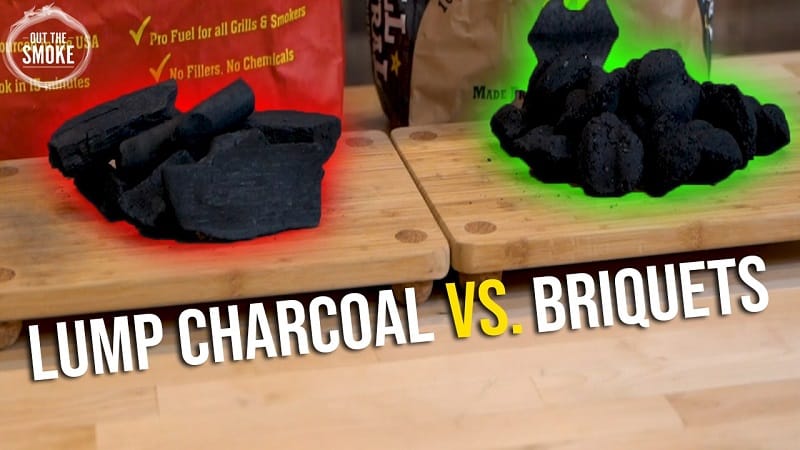
If you’re a fan of grilling, you’ve likely come across lump charcoal and charcoal briquettes. While they may seem interchangeable, there are some differences worth noting.
- Lump charcoal is often lauded for its purity, as it contains no additives or lighter fluids like briquettes.
- In addition, lump charcoal tends to light faster, burn hotter, and produce less ash than its briquette counterpart. That being said, many grill enthusiasts believe briquettes are better for low and slow cooking. This is because they are made from sawdust and other wood scraps compressed into uniform shapes, making them easier to control and distribute on the grill.
- Ultimately, the choice between lump charcoal and briquettes comes down to personal preference and the type of grilling being done.
Is There A Difference In Shelf Life Between Hardwood And Softwood Charcoals?
When choosing between hardwood and softwood charcoals, many wonder if there is a difference in shelf life. According to factual data, both types of charcoal can last indefinitely if stored in dry, ideal conditions.
However, some experts believe hardwood charcoal may have a slightly longer shelf life due to its denser composition and ability to withstand moisture better than softwood charcoal.
That being said, it’s important to note that charcoal can degrade over time, so it’s best to use it within 1-2 years of purchase to ensure optimal performance.
Ultimately, whether someone chooses hardwood or softwood charcoal will depend on their preference and cooking needs.
Factors That Affect Charcoal’s Burn Time
When using charcoal as a fuel source, burn time is an important factor. Several factors can affect how long a piece of charcoal burns, such as the briquette density, the carbon content of the raw material, and the quality of the charcoal.
- High-density briquettes tend to have a longer burning time and release more heat, while the carbon content of the raw material determines how much heat is released when it burns. Lower-quality charcoal and all wood charcoal may not burn as consistently and have a higher tendency to fizzle out.
- It is also important to understand the burning characteristics of charcoal, such as ignition temperature, steady-state burning, and ash content.
Knowing these factors can help individuals decide when choosing charcoal for their specific needs.
What Type Of Grill Is Best For Cooking With Charcoal?
Regarding cooking with charcoal, Kamado-style grills are popular for handling large pieces of charcoal. However, this doesn’t mean other charcoal grills can’t produce delicious results.
According to a grilling pro’s recommendation, the best overall charcoal grill is the Weber Original Kettle 22″. This budget-friendly grill has stood the test of time, delivering the best heat balance for high-heat searing tests. For those who want the absolute best charcoal grill, and the cost isn’t an issue, the Hasty Bake is a top choice.
No matter what type of charcoal grill is chosen, it’s important to elevate the charcoal on a small grate to prevent cooking debris and ash from interfering with the heat.
Common Mistakes That Reduce The Lifespan Of Charcoals When Storing Them
When storing charcoal, there are common mistakes that people tend to make, which can reduce the lifespan of the coals.
- One of the biggest mistakes is not storing charcoal properly. Charcoal should be kept in a cool, dry place away from moisture. Exposure to moisture, particles, and heat can cause the charcoal to go bad quickly.
- Another mistake people make is using poor-quality charcoal or not using it in a timely manner before it goes bad. The shelf life of charcoal is about five years, but proper storage conditions can increase or decrease its usable life.
- Lastly, people often get too excited to light their charcoal and make the mistake of using lighter fluid. This can negatively impact the taste of the food and reduce the lifespan of the charcoal.
By properly storing charcoal correctly and avoiding common mistakes, charcoal can have an indefinite lifespan and be used for many cookouts.
FAQs About How Long Does Charcoal Last
Does Keeping Charcoal In A Sealed Container Extend Its Shelf Life?
Keeping charcoal in a sealed container can extend its shelf life. This is because storing charcoal properly is important to keep it in good condition for future use. According to factual data, charcoal does not expire or deteriorate over time as long as it is not exposed to moisture, heat, or dirt. An airtight container or box is ideal for storing charcoal because it keeps it dry and free from external factors that might shorten its shelf life.
What Temperature Can Charcoal Reach When Burning?
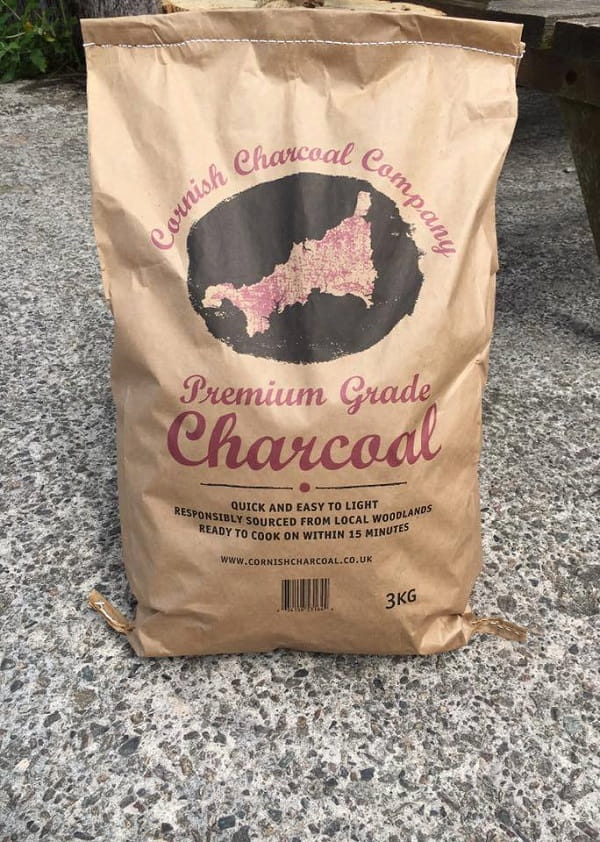
When burning, charcoal can reach extremely high temperatures. According to various sources, charcoal can burn as high as 2600 °C in a controlled environment with air blown into the mix. In an open grill, charcoal’s burn temperature is around 450-550°F with a full chimney of charcoal or 100 briquettes.
Good quality lump charcoal can even hit temperatures of 750°F or higher. While gas grills are easier to control, charcoal grills can get quite hot depending on the type of charcoal used and how the grill is made and used. It is important to note that charcoal burns at temperatures much higher than iron’s melting point of 2,010 degrees Fahrenheit.
How Long Can Charcoal Burn At A High Temperature?
Given the proper airflow and management, charcoal can burn extremely high temperatures for quite some time. On average, a single layer of charcoal can provide up to an hour of high heat where temperatures reach around 700-800 degrees Fahrenheit.
However, if the fire is effectively controlled with air blown into the mix, charcoal can burn at temperatures that soar to a couple of thousand degrees Fahrenheit. While this duration varies depending on various factors, such as the starting temperature, size, and type of charcoal, it is safe to say that charcoal can burn at a high temperature for a significant amount of time with proper usage. So, one can enjoy outdoor cooking for hours on end with a well-tended charcoal grill.
Is There A Difference Between Gas And Charcoal Grills When It Comes To Cooking Food?
Regarding cooking food, there is a noticeable difference between gas and charcoal grills. Gas grills use conduction through the grill bars to heat the food, while charcoal grills use radiation from hot coals to cook the food.
Gas grills are typically more complex and have temperature controls for each burner, while charcoal grills take about 15-20 minutes to reach the proper cooking temperature. Although gas grills provide a more even and consistent cooking temperature, only those with a searing option deliver a professional-grade char.
However, if someone uses their grill for long, low, and slow smoke roasting, there is a more noticeable difference in flavor from the combustion gases of charcoal. Ultimately, the choice between gas and charcoal grilling comes down to individual preference and the type of cooking experience one desire.
Conclusion
Now that you know how long charcoal will last, you can ensure you have enough to last through your next barbecue or grilling session. Remember that the type of charcoal you choose, the amount of oxygen present, and how you store the charcoal will all affect how long it will last. Keep these factors in mind when choosing the right charcoal for your needs.
Do you have any questions about how long does charcoal last? Let us know in the comments below.

Hey readers! Chip Holland here, and I’m a Manager of this website. My passion for writing about it only matches my passion for BBQ. Follow my blog for mouth-watering recipes, tips, and tricks for the perfect smoke, grill, and BBQ. I’m sure you won’t be disappointed!
